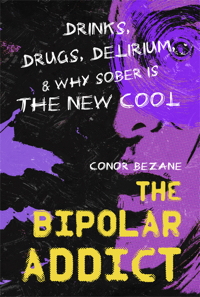This week marks Schizophrenia Awareness Week. Therefore, I bring you this story in hopes of helping to break the stigma.
Mental illness in the news is usually reported when something horrific happens. A homicide. A mass shooting. Infanticide.
There’s Adam Lanza, the 20-year-old man who shot and killed 20 children and six adults at Sandy Hook Elementary in Newtown, Connecticut in 2012. He was mentally ill and presumed to be schizophrenic.
There’s also Jared Loughner, who shot up a supermarket in Tucson, Arizona, killing six people and injuring 13 others, including congresswoman Gabrielle Giffords. He was paranoid schizophrenic.
Columbine murderer Eric Harris was posthumously diagnosed as a psychopath.
However, mentally ill people are more likely to be victims of violence than perpetrators themselves
A study published in the British Journal of Psychology found that 16 percent of mentally ill patients reported being victimized by violence.
People with bipolar disorder, schizophrenia or psychosis, are 2.5 times more likely than the general population to be attacked, mugged or raped (Hiday, et al.,1999).
Also, the overwhelming majority of Americans think that people with mental illness pose a threat for violence towards others and themselves (Pescosolido, et al., 1996, Pescosolido et al., 1999).
The word “psycho” gets thrown around left and right. And it conjures up the image of a crazy and dangerous person who goes out with a bang in a frenzy of violence. People who use this word are often using it to convey the word “psychopath.”
But what most people don’t know is that “psycho” is short for “psychosis,” which is a common symptom of schizophrenia as well as bipolar mania.
“Schizophrenia is a severe brain disorder in which people interpret reality abnormally,” according to the Mayo Clinic. “Schizophrenia may result in some combination of hallucinations, delusions, and extremely disordered thinking and behavior.”
There’s a difference between a psychopath and psychosis. Merriam-Webster defines a psychopath as “a person who is mentally ill, who does not care about other people, and who is usually dangerous or violent.”
Psychosis is a phenomenon in which a person experiences hallucinations or believes things that are not true.
I’m not schizophrenic but I can empathize with those who are. I’ve been psychotic before.
During my major manic episode in 2006, I thought I was on a reality TV show. I thought there were cameras in my apartment following my every move. I would walk down the street and hear bits and pieces of conversation and think people were talking about me.
This was a psychotic break and I quickly remedied the situation with an antipsychotic drug called Geodon, which staves off episodes like these. I haven’t had another break since.
A study printed in the scientific journal Arch Gen Psychiatry reveals that more than 3 percent of people in the US have had psychotic episodes.
Schizophrenia is commonly associated with psychopathy. However, the overwhelming majority of us who are mentally ill are not psychopaths. There are 3.5 million adults with schizophrenia, according to the Schizophrenia and Related Disorders Alliance of America. That’s out of 43.6 million people with any mental illness, according to the National Institute of Mental Health.
Violent behavior among schizophrenics is uncommon, according to a study from the Archives of General Psychiatry. Only 3.6 percent of 1,410 schizophrenic patients examined in a study had exhibited serious violent behavior.
I’ve been around schizophrenics at my meetings of Dual Recovery Anonymous and I’ve found them to be quiet, shy and mild-mannered people.
Robert Hare, Ph.D. concluded that less than 1 percent of all non-institutionalized adults meet the criteria for psychopathy (Hare, 1996).
Schizophrenia is incredibly misunderstood. That’s why we must break the stigma through events like Schizophrenia Awareness Week. The next time you think of calling someone “psycho” or “schizo,” think about the true meaning of the words. They’re nothing to be afraid of.








